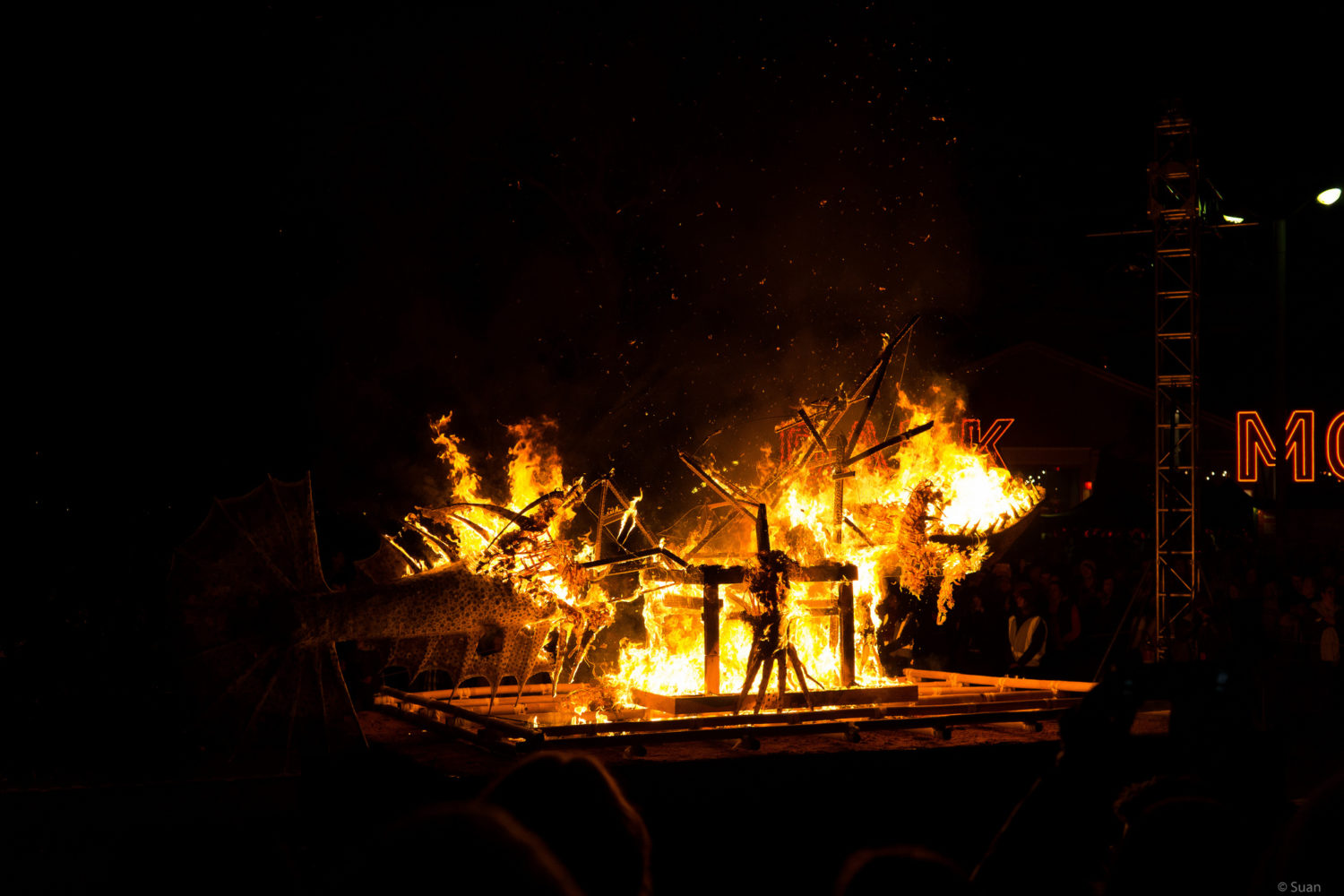Ogoh-Ogoh
Scorched tooth from a Weedy Sea-Dragon Ogoh-Ogoh
The weedy sea dragon (Phyllopteryx taeniolatus) lives in Tasmania’s kelp forests. It is a beautiful and shy creature, first depicted in Gould’s Sketchbook of Fishes, 1832. Its survival is precarious as the kelp comes under more and more stress from the recent unprecedented warming of the southern waters. Weedy sea dragons are very similar to seahorses. They also do not have teeth.
The Indonesian island of Bali is a long way from Tasmania. Yet it is thanks to an annual Balinese festival aimed at restoring balance between the seen world of humans/animals and the unseen world of the spirits that this impossible object—a weedy sea dragon tooth—can exist. To the Hindu Balinese, events such as earthquakes or terrorist attacks come about because of something amiss in the relationship between the worlds. Rituals must be undertaken to put things right. The lunar new year sees communities working together to do just that. They make large and often gruesome or gory effigies designed to attract any spirits that are hanging around. Called ogoh-ogoh, these figures are processed through the street and jostled and turned at crossroads to confuse them. Finally, the ogoh-ogoh are burnt and the spirits go off with the smoke. Following this, the whole island observes a day of silence and the world is back in balance.

Image: Suan Ann Tan (Flickr CC)
In 2015, a Tasmanian version of the ogoh-ogoh took over the streets of Hobart as part of the Museum of Old and New Art’s Dark Mofo Winter solstice festival. Instead of a demon from Balinese mythology, the papier-mâché effigy was in the form of a handfish, a tiny innocuous creature that lives in the River Derwent. This handfish, however, was huge with very large teeth. Thousands of people came out on a very cold winter’s night to accompany the ogoh-ogoh on its journey across the waterfont and to its fiery end.
By the following year, a new tradition had been established. Balinese artists again made the Tasmanian ogoh-ogoh, this time of a weedy sea dragon. Like the handfish before it, this dragon was ‘monsterised.’ No longer cute but still beautiful, it had large teeth and a certain glint in its eye. And like the handfish, it was stuffed full of joss paper on which people had written their deepest fears.
It may seem strange to burn an effigy of an animal so loved and endangered. People often cry as it burns not just because about 14,000 individual fears are going up in smoke but because there is something inherently disturbing in seeing even a fictitious beautiful animal burn. For me, this reveals the heart of the ogoh-ogoh project.

Image: Kaz Ross
The power of the ogoh-ogoh is in bringing people together. People are vulnerable and fragile while writing their most personal fears. But they are connected and powerful when carrying the ogoh-ogoh in the noisy and riotous procession through the deepening dusk to the final burning site. There, they witness the collective release of their fears. But the burnt weedy sea dragon tooth I rescued from the embers stands as a testament to our greatest fear. For, lurking in plain sight, is the terrifying truth: extinction in the Anthropocene.
Kaz Ross is a Lecturer and the Coordinator in Asian Studies, in Global Cultures & Languages, University of Tasmania.

